Research | November 2016 Hearing Review
Blinded study compares hearing aid and PSAP sound quality and speech intelligibility
The performance of two PSAPs were evaluated against a hearing aid for listeners with mild-to-moderate hearing loss. On the most important domain, speech intelligibility, it was shown that the hearing aid performed significantly better than both PSAPs. Relative to sound quality, the hearing aid was also on average preferred over both PSAPs. Thus, it seems fair to conclude that, based on speech intelligibility and sound quality, the hearing aid is the better audiological and rehabilitative choice.
In recent years, a new category of hearing amplification devices has been introduced. Although not intended to compensate for impaired hearing,1 Personal Sound Amplification Products (PSAPs) have been proposed as a cheaper alternative to hearing aids, and some studies have concluded that PSAPs, in select audiological domains, offer the same benefits as conventional hearing aids for people with mild-to-moderate hearing losses. However, very few of the published studies have compared the two product categories while ensuring proper test-subject blinding, and (to our knowledge) none have ensured test-subject blinding and individualized fit of the hearing devices.
Most PSAPs are being marketed and sold as over-the-counter (OTC) devices, typically purchased online. Some devices are fitted by the end-user at home, and some devices are not fitted at all. Thus, a major factor contributing to the lower retail price of PSAPs is that the end-user does not pay for the service of a hearing care professional. One disadvantage of this is an often-imprecise fit of the device to the individual hearing loss.2 Despite this and the “basic level” technology of most PSAPs, it has been argued at conferences that, for people with mild-to-moderate hearing losses, some PSAPs can offer an audiological performance similar to traditional hearing aids.2-4 However, when one considers the amount of time usually spent on fitting and fine-tuning conventional hearing aids, as well as the amount of resources required for the development of advanced hearing aids, these findings are quite surprising.
This study investigates whether it is really true that there are no differences in the audiological performance of PSAPs and hearing aids when both are fitted in as standardized a manner possible, and when the experimenters ensure that the participants are properly blinded relative to the device being listened to.
Study Methods
Amplification devices. This study evaluated two premium PSAPs: Perfect Choice HD (PC) and Sound World Solutions CS50+ (SWS) against the Oticon Alta2 Pro (Alta2) hearing aid. Both are among the premium PSAPs, priced in the high-end of the market; SWS got good reviews by Mamo et al in a 2016 study5 and were reported to produce good listening performance by Reed et al in a 2015 study.2 Thus, these two products were chosen as representatives of some of the best PSAPs in an admittedly wide field of marketed products.
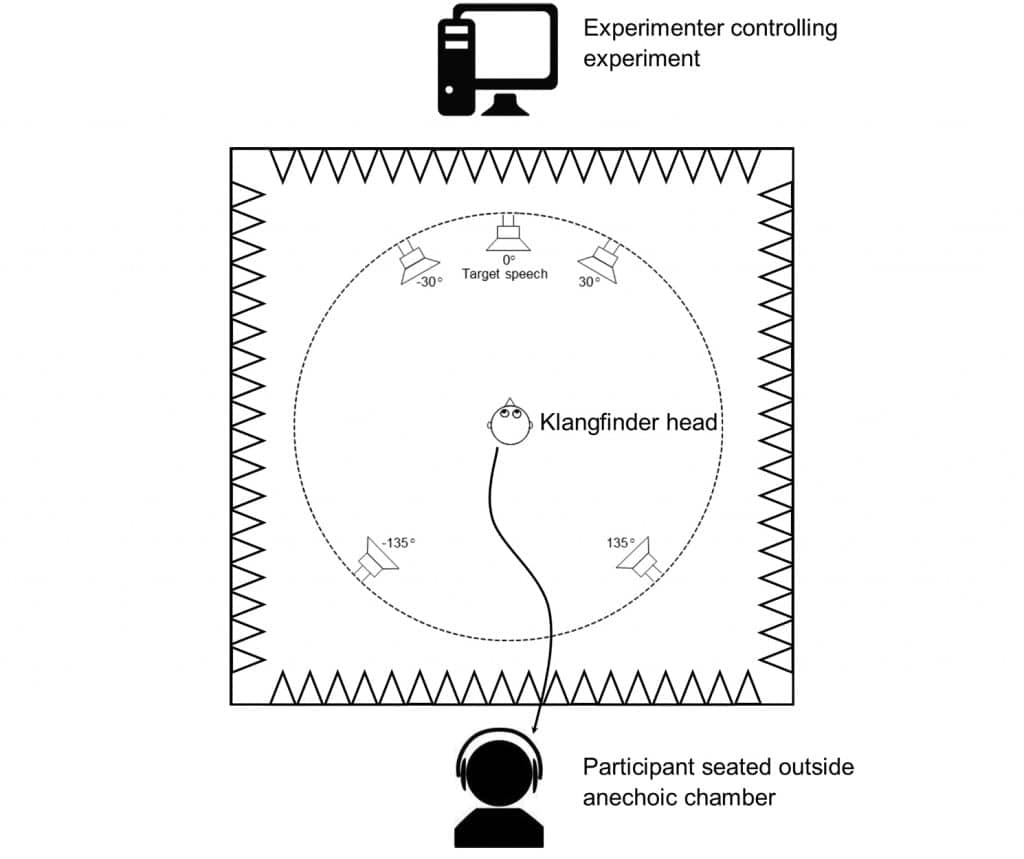
Figure 1. The participants were seated outside an anechoic room wearing headphones. Inside the room an artificial head was placed, wearing all three devices bilaterally.
Test set-up. Figure 1 illustrates the test set-up. Experiments took place inside and outside an anechoic room. An artificial head (Klangfinder HS8 Pro) with four pairs of “ear canals” was placed inside the anechoic room. The artificial head was wearing a pair of all three devices (Figure 2). The participant sat outside the anechoic room and listened through headphones. In this way, all three sets of devices were operating at all times, and a simple switch could be made between the three pairs of devices while the participant was listening.
This setup ensured that the participants were blinded to the device they were listening through, thus avoiding potential placebo effects. Further, it allowed for a smooth and quick way to switch between devices, which is particularly important when comparing sound quality.
Fitting of the hearing devices. An important decision when designing an experiment aimed to compare the performance of different hearing devices is how they should be fitted to the individual participant. This study chose to make the fitting of all hearing devices as consistent and simple as possible. This meant that the Alta2 hearing aid was fitted in prescribed mode (VAC+, one program) with no fine-tuning and no REM verification allowed. This choice was designed to mimic the most basic (ie, least possible) fit in a real-life hearing care practice—and to avoid being accused of creating a hearing-aid biased study.
For the PSAPs, the same fitting strategy meant that they were fitted based on the best possible tool available to an end-user ordering the devices online. For the SWS, the programming was based on a “prescribed” setting obtained by running the custom-made hearing test available in the accompanying app, and by selecting the most generally used program: Program 1 (“Everyday”). The PC does not come with a hearing test, and selection of the program number (Programs 1 to 3) is the only way to influence the frequency response. Again, the purported generally used program, Program 1 (“Speech”), was selected.
Speech Intelligibility
In two separate experiments—called Experiments A and B—10 (A) and 11 (B) participants with mild-to-moderate hearing loss were tested using the Danish Hearing-In-Noise Test (HINT).6 This was done in four different spatial setups. The target speaker was always placed in front (0°), whereas the positions and types of the maskers varied (see the summary in Table 1).
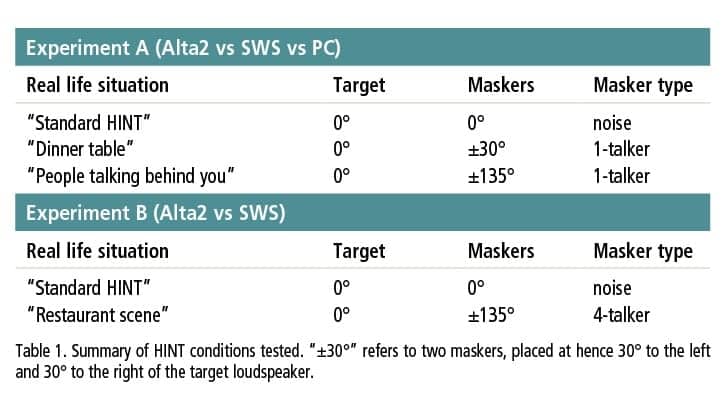
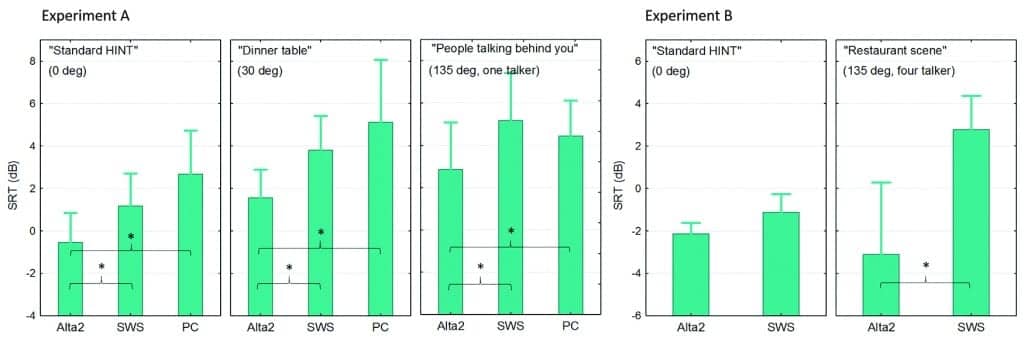
Figure 3. HINT results (lower scores indicate better results). In Experiment A, the hearing aid (Alta2) performed significantly better than the PSAPs in the three tested configurations (0°, ±30°, ±135° with one talker). In Experiment B, the hearing aid also performed better than the PSAP in the ±135° four-talker configuration, whereas no significant performance differences were observed in the 0° configuration. Bars show across-subject averages, error bars show 95% confidence intervals, and asterisks indicate significant differences (based on a mixed model Analysis of Variance, ANOVA) between hearing aid and PSAP scores.
The insignificant result of Experiment B is likely the consequence of the relatively small number of test subjects included in the experiments. However, if the results had been pooled across Experiments A and B, the difference would have been clearly significant. In the ±135° four-talker configuration, the hearing aid performed much better than the SWS. The reason for this is the adaptive directionality of the hearing aids, which was automatically activated for some (but not all) participants in this HINT configuration.
Overall, these findings showed that the hearing aid produced much better speech intelligibility in all the non-standard spatial configurations. Even in the standard HINT, a significant performance difference was observed between the hearing aid and PC and between the hearing aid and SWS in Experiment A, but not in Experiment B. Further, in the restaurant scene (±135°, four-talker), where adaptive directionality was applied for some of the subjects (ie, only for those performing below 0 dB SNR), an even larger difference in performance was observed between the hearing aid and the best-performing PSAP.
Sound Quality
Sound quality was also assessed in both Experiment A and B; however, the sound samples were changed between the two visits. In Experiment A, the subjects listened to three different pieces of music (classical, rock, jazz) and two types of speech (speech in quiet, dialogue in a cafeteria), whereas the subjects in Experiment B listened to two types of music (classical, jazz), three types of speech (speech in quiet, dialogue in traffic, dialogue in cafeteria), and finally to a soft signal of the chirping of birds in a forest. The classical and jazz sound samples were not the same in the two experiments.
The results of the sound quality experiments are shown in Figure 4. In experiment A, the results were summed across all 10 subjects, 5 sound samples, 5 repetitions, and 3 between-devices comparisons (a total of 750 comparisons). Experiment B had 11 subjects, 6 sound samples, 4 repetitions, and one between-devices comparison (a total of 264 comparisons). Experiment A showed that the subjects preferred listening through Alta2 and SWS over PC, with no significant difference between Alta2 and SWS. Experiment B (using a different set of sound samples) showed that Alta2 was significantly preferred over SWS.
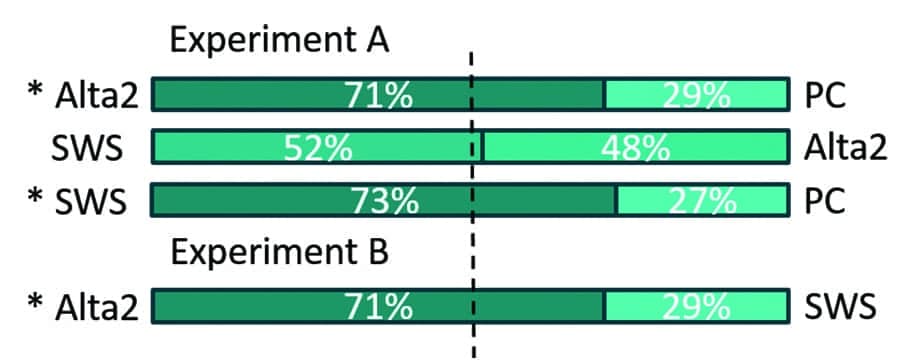
Figure 4. Preference across all participants, sound samples, and repetitions in Experiment A and B. The figure shows the preferences in percent of how many times the device shown in the left was preferred over the device to the right. Asterisks denote a statistically significant difference.
The reason that the sound quality was similar between the hearing aid and SWS in Experiment A and highly different in Experiment B is likely due to the audiogram-based fitting of the hearing aid which prescribes much more high frequency amplification than both PSAPs. In Experiment A, a jazz sound sample was selected that contained a lot of high frequency content, and some participants described the sound of the hearing aid in this condition as sharp or shrill, whereas for the more regular wideband jazz sample selected in Experiment B, the participants described the sound of the hearing aid as clear and crisp. It is speculated that the hearing aid suffered from the lack of fine tuning that would have been offered in a regular professional fitting situation.
Conclusions
In this study, the performance of two PSAPs were evaluated against the performance of a hearing aid for listeners with mild-moderate hearing losses. On the most important domains, speech intelligibility, it was shown that the hearing aid performed significantly better than both PSAPs. Relative to sound quality, the hearing aid was also on average preferred over both PSAPs, although one PSAP (SWS) was preferred equally often as the hearing aid on a subset of sound samples. Thus, it seems fair to conclude that, on speech intelligibility and sound quality, the hearing aid is the better rehabilitative choice.
Acknowledgement
Information in this article was originally presented in a poster session at the World Congress of Audiology held during September 2016 in Vancouver, Canada.
References
-
US Food and Drug Administration. Guidance for Industry and FDA Staff: Regulatory Requirements for Hearing Aid Devices and Personal Sound Amplification Products. Available at: http://www.fda.gov/MedicalDevices/DeviceRegulationandGuidance/GuidanceDocuments/ucm127086.htm
-
Reed NS, Betz J, Polyak N, Grabowski J, Korczak P, et al. Objective analyses and comparisons of personal sound amplification products. Poster presented at: NCRAR conference, Portland, Ore, September 16-18, 2015.
-
Xu J, Johnson J, Cox R, Breitbart D. Laboratory comparison of PSAPs and hearing aids. Paper presented at: Annual meeting of the American Auditory Society, Scottsdale, Ariz, March 2015. Available at: http://www.harlmemphis.org/files/9814/2593/1864/XuAAS2015_PSAPs.pdf
-
Kim J, Moon IJ, Hong SH, Comparative clinical study of speech performance using hearing aid and personal amplification product. Poster presented at: American Auditory Society Meeting, Scottsdale, Ariz, March 2016.
-
Mamo SK, Reed NS, Nieman CL, Oh ES, Lin FR. Personal sound amplifiers for adults with hearing loss. Am J Med. 2016;129(3):245-250.
-
Nielsen JB, Dau T. The Danish hearing in noise test. Int J Audiol. 2011;50(3):202–208.
Correspondence can be addressed to HR or Dr Rønne at: [email protected]
Original citation for this article: Rønne F, Rossing R. Are Hearing Aids the Better Rehabilitative Choice When Compared to PSAPs? Hearing Review. 2016;23(11):26.

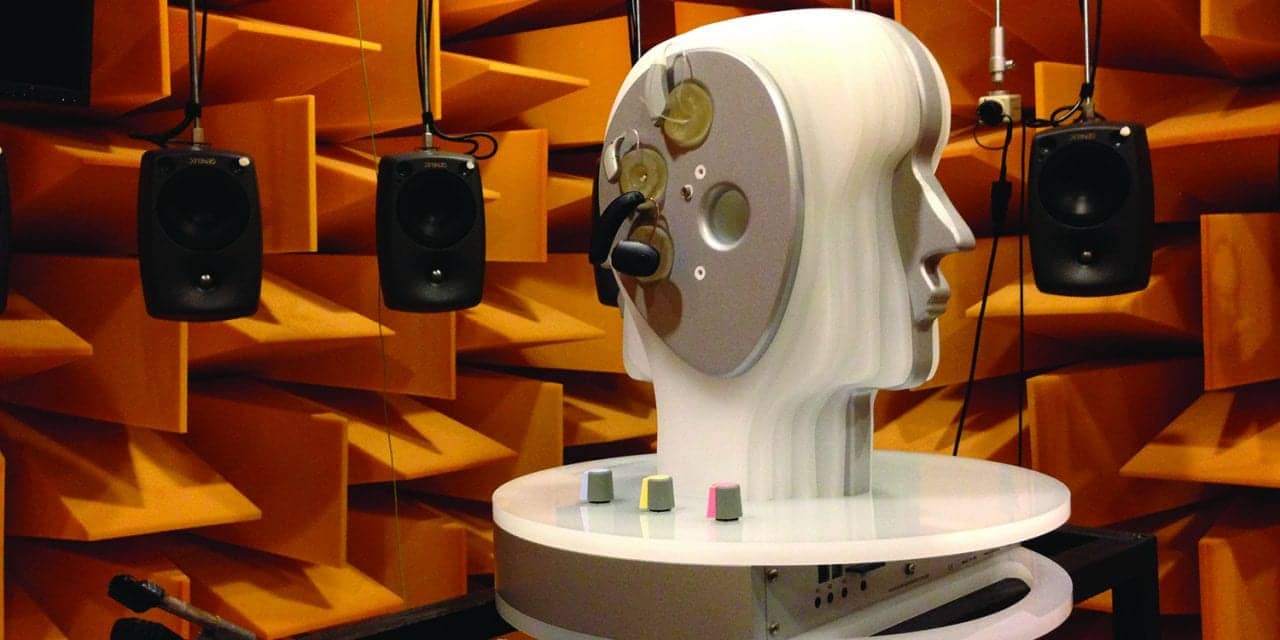
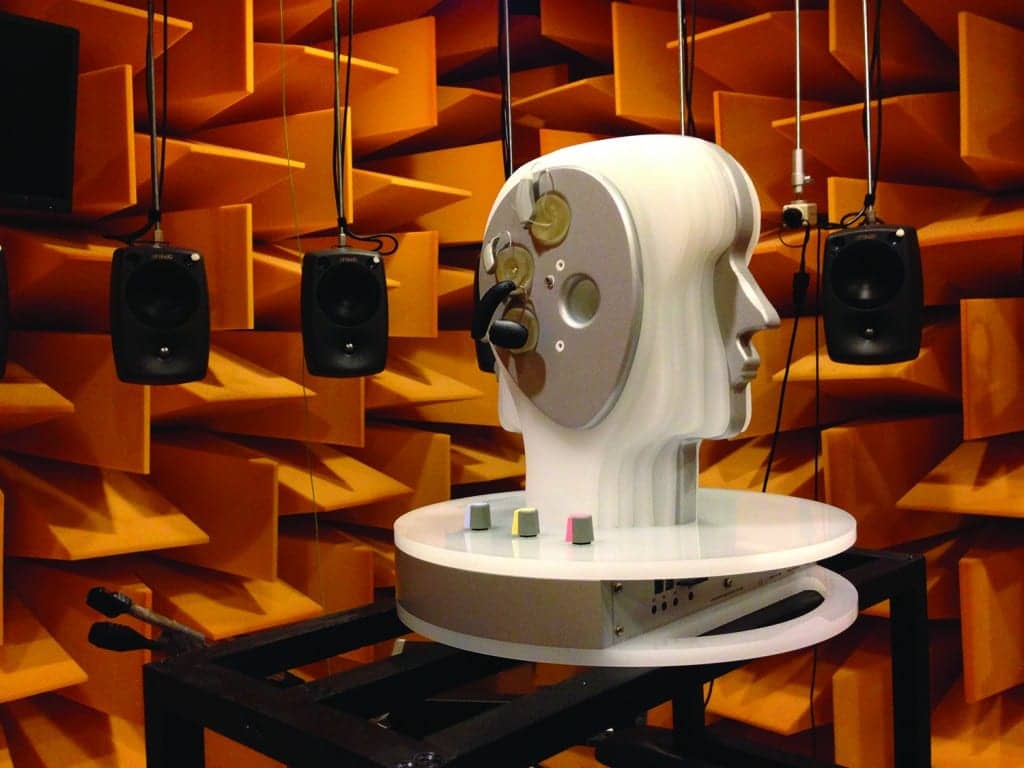
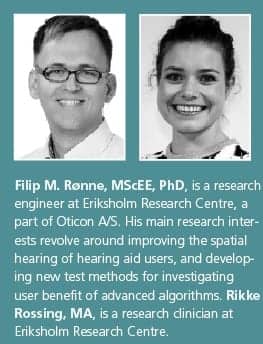
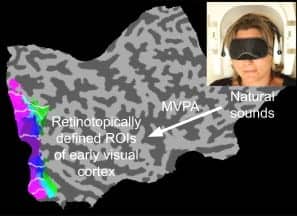


Unfortunately hearing problems seem to be one of the most difficult health issues to solve. In conversation with both ENT doctors and Audiologists it is admitted that there is no way to measure the actual degradation of the hearing canal and so minimal mechanical/electronic manipulation of something stuck in your ear is all the help possible. I am 90 in reasonable good health. I am on my third set of VA supplied hearing aids. None have helped hearing voices which seems to be my only hearing problem with or without using me aid or not
That’s pretty much an utterly useless comparison. If the hearing aid had been of a similar price range as the PSAPs, that might be useful. If the article had said something along the lines of “the hearing aid is the better choice, but for the price the PSAPs provide significant benefits,” that would be useful. But saying “A BMW is a better choice than a Kia Rio” is ridiculous. Honestly, reading this article was an utter waste of time.
Problem is, the authors have clear conflicts (check affiliations) so the study is of limited usefulness.